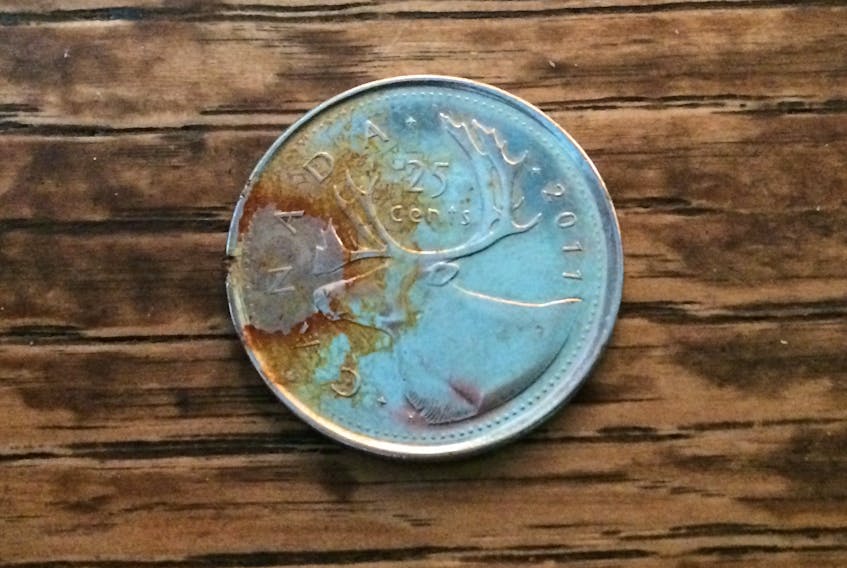Yes, there are more important things in the world.
And, yes, it’s a little like shaking a fist at the clouds.

But, sometimes, small things nag at me.
Things as small as pocket change.
Right now, in the world of the detectorists, the land is waking up. Or, at least, the land is softening up. There are any number of social media sites where metal detector aficionados gather, talking about where they’re likely to search this year, and whether the frost has gone out of the ground in their particular areas. They are a strange crew, with their own shorthand discussions about what equipment to get and where the best places are to search.
They look for all things metal: belt buckles and brooches, pins and rings and all manner of treasure.
And coins. They like coins — the older, the better.
What’s interesting to me is that older coins are likely to stay in better condition than their more modern companions.
Chances are, if you pay with cash for your coffee or that muffin, you’ll eventually get a relatively new coin that’s in remarkably bad shape. A kind of bad shape that older coins don’t suffer from.
If you’re looking at this online, you can see my photo of a 2011 quarter. If you can’t see the picture, it’s of a shiny silver quarter, just eight years old, with a circle of rust just in front of the caribou’s nose. Where that rusty circle touches the edge, the steel core of the coin has been exposed, and the coin is rusting away from the inside. The metal is actually crumbling away beneath that shiny skin.
Today’s Canadian coins are not like they used to be; they are, by and large, steel coins covered with a thin scrim of a more valuable, more impervious metal — usually nickel.
And that’s a relatively healthy version; I’ve seen dimes so worn away by the elements that it’s almost impossible to make out what they are. Sometimes, the only hint is the toothed edges around their circumference. (Those little teeth, known as denticles, were added to keep people in past years from shaving precious metals from the edges of coins. Now, denticles — or reeding — are basically kept as tradition. There’s nothing in a modern coin worth shaving down.)
Drop a modern dime on a hard surface and it doesn’t even ring like a coin anymore; it makes the kind of sound that a dropped button makes. Try it, if you don’t believe me.
Today’s Canadian coins are not like they used to be; they are, by and large, steel coins covered with a thin scrim of a more valuable, more impervious metal — usually nickel.
A modern Canadian quarter is 94 per cent steel, its shiny nickel covering just two per cent of the metal in the coin.
And while it’s a way to make coins more cheaply, it sure isn’t a way to make them last longer. The steel core will start to rust the moment there’s a breach in the nickel; before 1999, Canadian quarters were 99 per cent nickel. Before 1967, they were primarily silver. Both the silver and nickel versions last far better than the current versions do — but both nickel and silver (especially silver) are far more expensive than garden-variety steel.
I know coins are less and less common in people’s pockets now — I know that inflation has chewed away at their value every bit as much as corrosion now chews away at the cheaper metals they’re made of.
Still, I can’t help think that, for centuries, coins were made to last; coins were a solid manifestation of the worth of things, and, in themselves, a sort of solid metal commitment, a tangible and permanent measure of trade. Queens and kings appeared on them as an imprimatur of their honest value.
And now, they can simply rust away.
Russell Wangersky’s column appears in 36 SaltWire newspapers and websites in Atlantic Canada. He can be reached at [email protected] — Twitter: @wangersky.
MORE FROM RUSSELL WANGERSKY:









